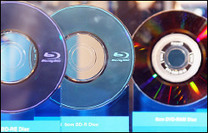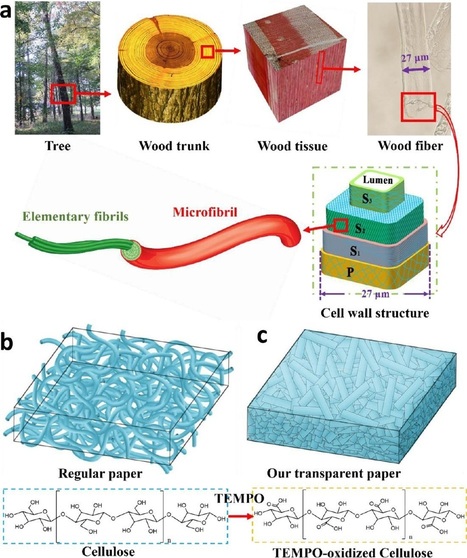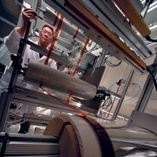A new kind of paper that is made of wood fibers yet is 96% transparent could be a revolutionary material for next-generation solar cells. Coming from plants, the paper is inexpensive and more environmentally friendly than the plastic substrates often used in solar cells. However, its most important advantage is that it overcomes the tradeoff between optical transparency and optical haze that burdens most materials.
A team of researchers from the University of Maryland, the South China University of Technology, and the University of Nebraska-Lincoln, have published a paper on the new material in a recent issue of Nano Letters.
As the researchers explain, solar cell performance benefits when materials possess both a high optical transparency (to allow for good light transmission) and a high optical haze (to increase the scattering and therefore the absorption of the transmitted light within the material). But so far, materials with high transparency values (of about 90%) have very low optical haze values (of less than 20%).
The new wood-based paper has an ultrahigh transparency of 96% and ultrahigh optical haze of 60%, which is the highest optical haze value reported among transparent substrates.
The main reason for this good performance in both areas is that the paper has a nanoporous rather than microporous structure. Regular paper is made of wood fibers and has low optical transparency due to the microcavities that exist within the porous structure that cause light scattering. In the new paper, these micropores are eliminated in order to improve the optical transparency.
To do this, the researchers used a treatment called TEMPO to weaken the hydrogen bonds between the microfibers that make up the wood fibers, which causes the wood fibers to swell up and collapse into a dense, tightly packed structure containing nanopores rather than micropores.
Via
Dr. Stefan Gruenwald

 Your new post is loading...
Your new post is loading...
 Your new post is loading...
Your new post is loading...











